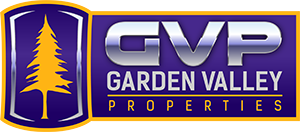Visit GVP's blog to learn more about beautiful Garden Valley, home care tips, and advice for when you are buying or selling.

On June 23rd The National Association of Realtors announced a partnership with ?Food Recovery Network to combat hunger during the 2021 NAR Presidents Circle Conference, as well as, upcoming events and meetings.? ??Food Recovery Network is a non-profit that unites 4000 college students with food suppliers and businesses to recover perishable? food, that would otherwise go to waste, and donate to over 350 partners who feed people in need.? In 2020 FRN donated over 800,000? meals.?
NAR will invite the 1200 state and local Realtor associations to participate.? With over 1.4 million members nationwide, NAR’s partnership with Food Recover Network will be critical in helping FRN continue to address food hunger and food waste recovery.
All Garden Valley Properties agent are members of the National Associate of Realtors.? Giving back to our communities is what we do!
Want to know more about what you can do to help in the Garden Valley Community?? Contact Garden Valley Properties at 208-462-4620
Want to know how you are doing with food waste?? Take the Challenge!
GET SMART: TAKE THE CHALLENGE
KEEP GOOD FOOD FROM GOING TO WASTE
WHAT IS THE CHALLENGE?
Did you know that in 2013 Americans threw 35 million tons of food into landfills and incinerators? Research
shows that nearly everyone wastes more than they think they do. The?Food: Too Good to Waste?Challenge
will help you figure out how much food is really going to waste in your home and what you can do to waste
less. By making small shifts in how you shop for, prepare, and store food, you can save time and money, and
keep the valuable resources used to produce and distribute food from going to waste!
WHAT DO YOU NEED?
You only need a few basic tools to get started, which include 1) a pen/pencil, 2) paper or printed worksheets,
3) small garbage bags, and 4) a small scale (optional).
GET SMART: SEE HOW MUCH FOOD (AND MONEY) YOU ARE REALLY THROWING AWAY
WEEKS 1 & 2: Measure how much food your family wastes in a week and record the volume and/or weight.
WEEKS 3 through 5: Try out one or more of the smart strategies listed below while continuing to measure how
much goes to waste each week. Keep notes on what works to reduce food waste and what doesn’t.
· Smart Shopping: Buy What You Need?– Make a shopping list with the Meals-In-Mind Shopping List
template based on how many meals you expect to eat at home before your next shopping trip. By
buying no more than what you expect to use, you will be more likely to use it up and keep it fresh.
· Smart Storage: Keep Fruits and Vegetables Fresh?– Store produce so it stays fresh longer with the help
of the Fruits and Vegetable Storage Guide.
· Smart Prep: Prep Now, Eat Later?– By preparing perishable foods as soon as possible, preferably post
shopping, you’ll make it easier to serve snacks and meals later in the week, saving time, effort and
money.
· Smart Saving: Eat What You Buy?– This involves being mindful of leftovers and old ingredients that
need using up. The “Eat First” prompt can be used to designate an area in your refrigerator for
leftovers and food that won’t keep long.
Week 6: Measure and record your final weekly food waste amount. See how much food (and money) you
saved compared to weeks one and two.
GET READY
You can find all the printed materials you need to take the FTGTW Challenge available for download at
http://www2.epa.gov/sustainable-management-food
They include:
· This instruction sheet which includes the recording worksheet.
· Meals in Mind Shopping List Template
· Fruit and Vegetable Storage Guide
· Eat Me First Prompt
TIPS FOR TAKING THE CHALLENGE
1. Explain the challenge to members of your household/community and ask for their participation.
2. At the start of each week, line one paper bag with a green compostable bag. Over the course of the
week, place all your PREVENTABLE food waste into the bag. Discard NON-EDIBLE food in the usual
manner. (PREVENTABLE food waste is both food you bought to eat but has since spoiled and food that
was prepared but not eaten and was then thrown away. NON-EDIBLE food waste is everything you
wouldn’t normally eat, such as banana peels, egg shells, apple cores and chicken bones.)
3. At the end of each week, measure both the weight and the volume of food waste in the bag. Record
both the volume and the weight for the week on the attached worksheet. Once you get started, it
should take no more than 15 minutes a week to measure and record your food waste.
4. If the bag fills before the end of seven days, weigh or record the volume of the full bag and record how
many days you collected food in that bag. Then begin collection in a new bag. At the end of the week,
total your weight and/or volume of food waste for the entire week.
5. After you record the weight and volume of food wasted for the week, dispose of the collection bag,
including food, appropriately and as acceptable for your collection service, by composting, through
organics collection or in the garbage.
6. Except for the new strategies you try starting in week 3, keep to your usual routine as much as possible
during the challenge. For example, unless you regularly clean out your freezer, do not clean it
throughout the challenge.
7. At the end of week 6, compare your totals for weeks 1 and 2 to weeks 3 through 6 and see how much
food you saved from going to waste! Many families have reduced their food waste by 25% or more.
ADDITIONAL WASTE COLLECTION TIPS:
· If you are concerned about leakage, then you might use a plastic bag as a second liner.
· If concerned about odor, you can clip the top of the bag shut; or you can start using a new bag midweek,
as long as you track the total volume of waste for the whole week.
· Do not collect liquid waste such as soup or food-soiled paper products.
AFTER THE CHALLENGE
Once you’ve completed the challenge, share your successes and lessons learned with other individuals or
organizations who may be interested in reducing wasted food.
For more information on sustainable management of food, please visit
http://www.epa.gov/sustainable-management-food
TAKE THE CHALLENGE:
KEEP GOOD FOOD FROM GOING TO WASTE
WEEK 3 NOTES (WHAT WORKS, WHAT DOESN’T)
Start Date: ____________ Day of Week: ____________ ________________________________________
______ Bag Volume ______ Weight ________________________________________
______ # of days collected ________________________________________
WEEK 4 NOTES (WHAT WORKS, WHAT DOESN’T)
Start Date: ____________ Day of Week: ____________ ________________________________________
______ Bag Volume ______ Weight ________________________________________
______ # of days collected ________________________________________
WEEK 5 NOTES (WHAT WORKS, WHAT DOESN’T)
Start Date: ____________ Day of Week: ____________ ________________________________________
______ Bag Volume ______ Weight ________________________________________
______ # of days collected ________________________________________
WEEK 6 NOTES (WHAT WORKS, WHAT DOESN’T)
Start Date: ____________ Day of Week: ____________ ________________________________________
______ Bag Volume ______ Weight ________________________________________
______ # of days collected ________________________________________
Totals – Weeks 3 through 6 Averages – Weeks 3 through 6
______ Bag Volume ______ Weight Total Volume ÷ 4 = ______ Total Weight ÷ 4 = ______
RECORDING WORKSHEET
WEEK 1 NOTES (WHAT GOES TO WASTE AND WHY)
Start Date: ____________ Day of Week: ____________ ________________________________________
______ Bag Volume ______ Weight ________________________________________
______ # of days collected ________________________________________
WEEK 2 NOTES (WHAT GOES TO WASTE AND WHY)
Start Date: ____________ Day of Week: ____________ ________________________________________
______ Bag Volume ______ Weight ________________________________________
______ # of days collected ________________________________________
Totals – Weeks 1 and 2 Averages – Weeks 1 and 2
______ Bag Volume ______ Weight Total Volume ÷ 2 = ______ Total Weight ÷ 2 = ______
?












